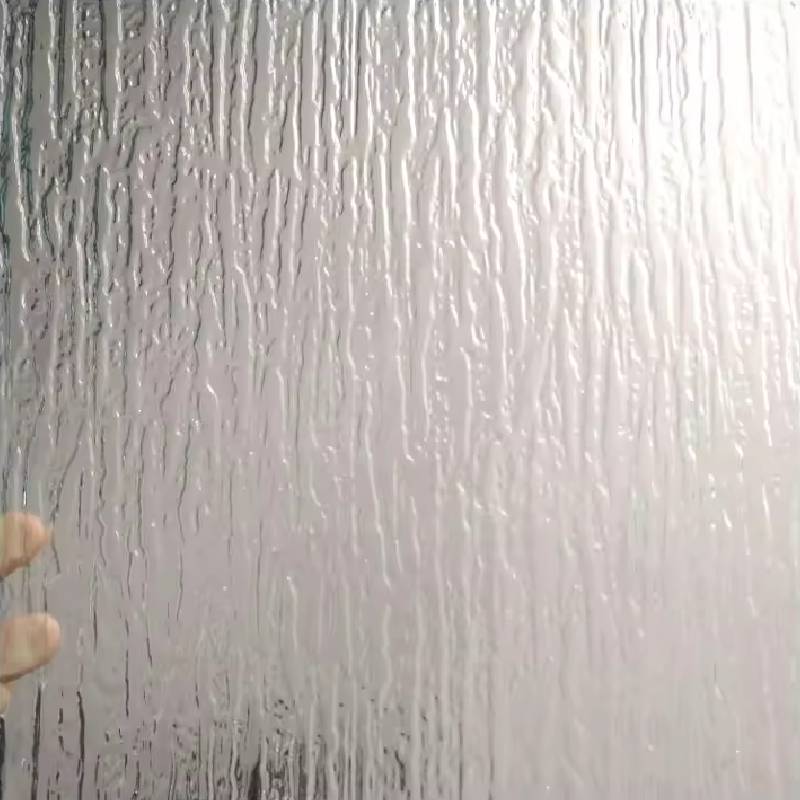The Flat Glass Production Process An Overview
Flat glass, known for its extensive use in windows, mirrors, and various architectural applications, undergoes a complex production process. This process is essential in creating the high-quality glass products that meet the demands of both manufacturers and consumers. The journey of flat glass production involves several key stages, including raw material preparation, melting, forming, annealing, and finishing.
Raw Material Preparation
The production of flat glass begins with the preparation of raw materials. The primary ingredients typically include silica sand, soda ash, and limestone. Silica sand, which comprises a significant portion of the mixture, provides the glass its fundamental structure. Soda ash lowers the melting point of silica, making it easier to process, while limestone strengthens the final product and helps control its chemical stability. In addition to these main components, various additives may be included to enhance specific properties of the glass, such as color and UV resistance.
Melting
Once the raw materials are prepared, they are mixed and fed into a glass melting furnace. The furnace operates at extremely high temperatures, usually around 1,700 degrees Celsius (3,092 degrees Fahrenheit), to melt the mixture into a molten glass state. This environment must be carefully controlled to ensure that the glass melts uniformly and impurities are minimized. The melting phase is crucial, as any inconsistencies in this stage can lead to defects in the final product.
Forming
flat glass production process
After melting, the molten glass is formed into flat sheets using one of several methods, the most common being the float glass process. In this process, the molten glass is poured onto a bath of molten tin, where it naturally spreads out and forms a smooth, flat surface. This method not only creates uniform thickness but also results in a glass surface that is optically clear and free from defects. In some cases, alternative forming techniques such as sheet glass processes may be used, especially for specialty applications.
Annealing
Once formed, the flat glass must be gradually cooled in a controlled environment, known as the annealing lehr. This step is vital to relieve internal stresses introduced during the forming process. Inadequately cooled glass may exhibit flaws, such as breakage or warping, under stress. The annealing process can take several hours and involves precisely controlling the temperature and cooling rate to ensure that the glass retains its integrity and achieves the desired mechanical properties.
Finishing
After annealing, the flat glass moves on to the finishing stage, where it undergoes further treatments to enhance its characteristics. This may include cutting the glass into required sizes, polishing the edges, and applying coatings for added functionality, such as anti-reflective or low-emissivity features. Quality control is a critical aspect of this stage, ensuring that only the best products reach consumers.
In conclusion, the flat glass production process is a sophisticated and multifaceted operation that requires careful attention to detail at every step. From raw material preparation to finishing, each phase plays a pivotal role in producing high-quality flat glass. As demand for energy-efficient and aesthetically pleasing glass products continues to rise, advancements in production techniques are likely to shape the future of this essential industry, ensuring that flat glass remains a vital component in modern architecture and design.
 Afrikaans
Afrikaans  Albanian
Albanian  Amharic
Amharic  Arabic
Arabic  Armenian
Armenian  Azerbaijani
Azerbaijani  Basque
Basque  Belarusian
Belarusian  Bengali
Bengali  Bosnian
Bosnian  Bulgarian
Bulgarian  Catalan
Catalan  Cebuano
Cebuano  Corsican
Corsican  Croatian
Croatian  Czech
Czech  Danish
Danish  Dutch
Dutch  English
English  Esperanto
Esperanto  Estonian
Estonian  Finnish
Finnish  French
French  Frisian
Frisian  Galician
Galician  Georgian
Georgian  German
German  Greek
Greek  Gujarati
Gujarati  Haitian Creole
Haitian Creole  hausa
hausa  hawaiian
hawaiian  Hebrew
Hebrew  Hindi
Hindi  Miao
Miao  Hungarian
Hungarian  Icelandic
Icelandic  igbo
igbo  Indonesian
Indonesian  irish
irish  Italian
Italian  Japanese
Japanese  Javanese
Javanese  Kannada
Kannada  kazakh
kazakh  Khmer
Khmer  Rwandese
Rwandese  Korean
Korean  Kurdish
Kurdish  Kyrgyz
Kyrgyz  Lao
Lao  Latin
Latin  Latvian
Latvian  Lithuanian
Lithuanian  Luxembourgish
Luxembourgish  Macedonian
Macedonian  Malgashi
Malgashi  Malay
Malay  Malayalam
Malayalam  Maltese
Maltese  Maori
Maori  Marathi
Marathi  Mongolian
Mongolian  Myanmar
Myanmar  Nepali
Nepali  Norwegian
Norwegian  Norwegian
Norwegian  Occitan
Occitan  Pashto
Pashto  Persian
Persian  Polish
Polish  Portuguese
Portuguese  Punjabi
Punjabi  Romanian
Romanian  Russian
Russian  Samoan
Samoan  Scottish Gaelic
Scottish Gaelic  Serbian
Serbian  Sesotho
Sesotho  Shona
Shona  Sindhi
Sindhi  Sinhala
Sinhala  Slovak
Slovak  Slovenian
Slovenian  Somali
Somali  Spanish
Spanish  Sundanese
Sundanese  Swahili
Swahili  Swedish
Swedish  Tagalog
Tagalog  Tajik
Tajik  Tamil
Tamil  Tatar
Tatar  Telugu
Telugu  Thai
Thai  Turkish
Turkish  Turkmen
Turkmen  Ukrainian
Ukrainian  Urdu
Urdu  Uighur
Uighur  Uzbek
Uzbek  Vietnamese
Vietnamese  Welsh
Welsh  Bantu
Bantu  Yiddish
Yiddish  Yoruba
Yoruba  Zulu
Zulu 

